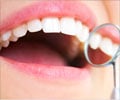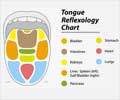A path breaking revolutionary ionic solar toothbrush is making waves as it heralds the end of bacteria from the mouth, dental plaque, gingivitis and toothpaste!

He along with his colleague Dr. Gerry Uswak who is the dean of the university's College of Dentistry, are currently researching the rating of this toothbrush in comparison with a regular toothbrush on 120 teenagers for the removal of bacteria and plaque, with very positive results. Dr. Komiyama says that the toothbrush has been tested in cultures of bacteria that cause periodontal disease and that the brush causes “complete destruction of bacteria”.
The ionic toothbrush (Soladey-J3X ) won the first place in the FDI Annual World Dental Conference in Dubai out of 170 entries promising the world a better smile without bacteria in the mouth!
Dr. Yoshinori Nakagawa from Japan has also been instrumental in the invention of an ionic toothbrush called “Soladay-3″ in 1980’s which has a similar mechanism of action as “Soladey-J3X”.
“Shiken” is a Japanese company which has tested the revolutionary ionic toothbrush. It reports the toothbrush's reliability in the destruction of hidden bacteria in the mouth besides being effective in the removal of tooth stains like smokers and tobacco stains. Ionic toothbrush has sold over 10 million toothbrushes.
How Does The Ionic Toothbrush Work?
The ionic toothbrush works by reversing the negative electrical charge on the teeth by sending positive ions into the mouth. As the positive charged particles will not bind to positive charged atoms, these ions help in getting rid of the plaque and the bacteria.
Here again, there is a production of even more electrons, which comes in contact with the saliva of the mouth to break down the dental plaque by removing the hydrogen ions in the plaque. Research has proved that the ionic toothbrush does eliminate the S.mutans bacteria in the mouth. This bacteria is responsible for producing cavity and decay which the normal toothbrush fails to prevent.
In addition to cleaning teeth and preventing cavities, the ionic toothbrush might be useful in preventing gum disease. Plaque buildup is responsible for gum disease and can cause bad breath. The magnetic pull of the negatively charged bristles helps the brush to reach into places that a regular toothbrush fails to reach.
What does Research Say?
Wayback in 1991, the TiO2 semiconductor toothbrush was compared to a conventional toothbrush by Dr. Weiger R and Dr. Engel.N at the Center for Dentistry, Oral and Jaw Medicine at the University of Tubingen. They reported a considerable reduction in the plaque indices, reduced papilla bleeding index and reduction in gingival plaque formation by subjects using the TiO2 semiconductor toothbrush or a solar dental toothbrush.
Another study involving 20 dental students in the age group of 18-20 years was conducted by the College of Dental Sciences, Davangere, Karnataka in India by Dr. Deshmukh and his team and they concluded that “both active (equipped with lithium battery) and inactive (without lithium battery) ionic toothbrushes reduced the plaque index and gingival bleeding index scores significantly.” They also observed that “active ionic tooth brushes were more effective as compared to inactive ionic toothbrushes. There was no soft tissue trauma following the use of both types of toothbrushes, which showed that ionic toothbrushes were equally safe for regular long-term use.” The result of this research was published in the Indian journal of dental research in 2006. A similar investigation was conducted by Dr. JJ Pucher and his team at the Department of Veterans Affairs in the Greater Los Angeles Healthcare System in California, USA. They studied a group of 52 orthodontic patients wearing orthodontic appliances. These patients were divided into two groups; group 1 consisted of patients using an ionic toothbrush with active battery while group 2 was using an ionic toothbrush using an inactive battery. The plaque and gingival indices were measured at baseline, in the time span of two weeks and six weeks. It was observed that regardless of the presence or absence of an active battery, the ionic toothbrush is equally effective in the reduction of plaque and gingivitis. Dr. JN Hoover and his team from the College of Dentistry, University of Saskatchewan Saskatoon, Canada have also concluded that the “Soladey 2 toothbrush showed significantly more reduction of plaque on the buccal surfaces of all teeth than the control brush without the semiconductor.”
There is Only one report from Dr. Moreira and his faculty of dentistry from the Federal University of Rio Grande do Sul, Porto Alegre, Brazil has given a contradictory report stating that “The ionic and the conventional toothbrushes did not present statistically significant differences on plaque and gingival bleeding reductions.” Here, they studied the effect of an ionic toothbrush on twenty first-year dental students where 10 students used an ionic toothbrush and the other 10 students used a conventional toothbrush. They have concluded that “the performance of an ionic toothbrush did not differ from a conventional toothbrush in the reduction of plaque and gingivitis”. However their numbers are very small, hence conclusions are not scientifically valid.
Conclusion
All said and done, this toothbrush seems to be a new hope to millions having dental problems as Miguel de Cervantes, Don Quixote rightly says “every tooth in a man's head is more valuable than a diamond.” A more universal international trial is needed from other scientific bodies to make this new revolutionary toothbrush the brush of tomorrow. The strong lobby of toothpaste manufacturers also may not make this easily possible.
Source-Medindia








